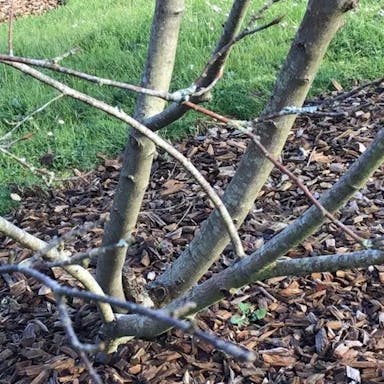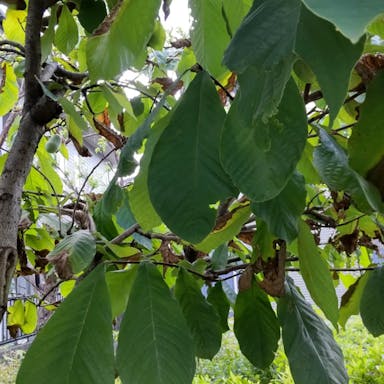Alternate-leaf dogwood, scientifically known as Cornus alternifolia, is a deciduous shrub or small tree native to eastern North America. It is a member of the dogwood family, Cornaceae. The leaves are ovate to elliptic in shape, with a smooth margin and a pointed tip. They are dark green in color and turn reddish-purple in the fall. The flowers are creamy white and are arranged in flat-topped clusters called cymes. These clusters can measure up to 4 inches in diameter. The flowers give way to small, blue-black berries that are loved by birds. This plant can reach a height and has a spread. It prefers moist, well-drained soils and can tolerate both full sun and partial shade. Alternate-leaf dogwood is relatively easy to grow and is often used in landscaping for its attractive foliage and flowers. It is also known for its ability to attract pollinators, such as bees and butterflies. The dogwood flower is often associated with rebirth and renewal. It is also considered a symbol of protection and stability. There are no known varieties of Cornus alternifolia, but there are other species of dogwood that have different characteristics and growth habits.
0
0











